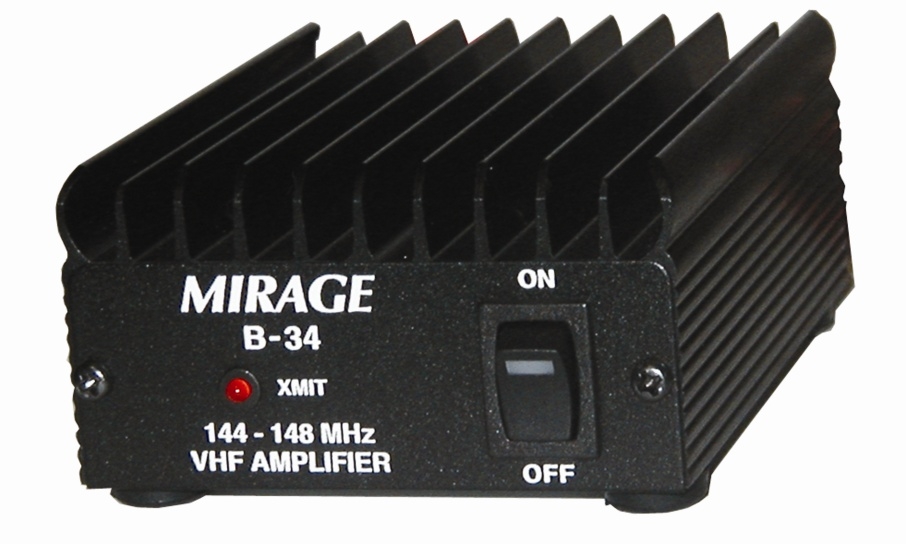On Saturday morning I headed over to the monthly Electronics Flea Market over at the De Anza College parking lot. My main reason for going was to pick up a few more of the $1 LED Keychain flashlights I got there a few months back, mine broke and Ellen wanted one. Of course I wanted to check out the other “toys” there as well!
On the last row just as I was getting ready to leave I saw a brand new Mirage B-34 linear power amplifier sitting on a table. They are hooked up in-line between a 5 watt handheld radio and the antenna, boosting the signal output up to 35 watts. I’d never used one, but I know I could definitely benefit from some additional power. Thought about buying it, the price was $40, then wandered away.
Before leaving, I pulled out my iPhone and checked Google and eBay for the prices of these things… saw prices ranging from $89-$120 for them, so $40 was a great deal, figured I could just sell it and make a profit.
Well, as soon as I got home I quickly talked myself in to at least “trying it out” which led to a long afternoon of playing with cables, connectors, and soldering irons. I checked the max power consumption of my cigarette lighter adaptor for the car, saw it was good enough, so I soldered a lighter adaptor to the power cables on it. Bought an antenna cable at radio shack, cut off the end, and soldered on another PL-259 to the end of it and got everything running.
I pulled out my second HT so I could test the audio differences with it on and off, and quickly learned about desensing a receiver… The HT would hear the “roger beep” style tone of the repeater, but I couldn’t hear the audio of my own transmission at all. I even separated it from the antenna a ways and had it recording on my laptop so I could review the audio later, but still wasn’t able to get much.
It wasn’t until tonight when I was talking with Craig, W6WL, and he told me it was definitely just desensitizing the receiver, and after a quick test with him we proved both radios really were transmitting properly. Sitting in my driveway with my mag-mount antenna he said he could receive me about 70% signal. Then I flipped on the 35 watt amplifier and he said he could hear me at 104% hehe. We chatted for a bit and my signal was quite strong to him, so long story short, I’m very pleased with my purchase!
In addition to that, while I was working on getting that wired up, I also did some additionall installation to get my RTrack APRS tracker wired up in a more permanent installation. I’ve got it running to my old hershy kiss mag mount antenna. We’ll see how often I make it to a digipeater now, and if I don’t get great results, I may toss the 35W amp inline for that transmitter for a little while and see if that brings about great improvement.
The tracker of course was primarily for the airplane, and I think the lower power of the unit will work just great. Driving around this mountainous tree filled area with a small antenna some extra wattage might be beneficial!

